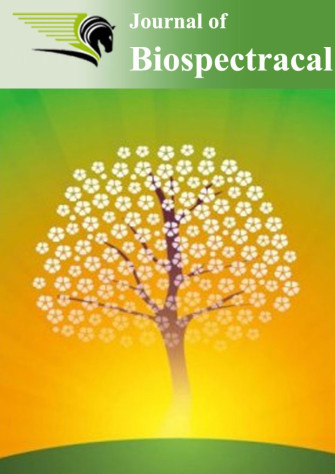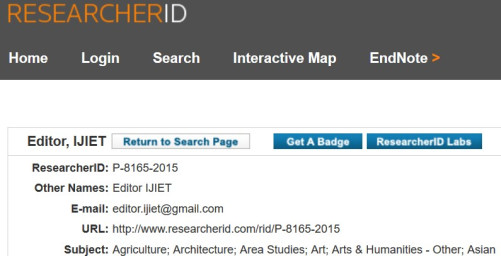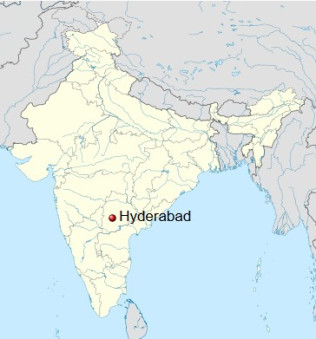Juniper Publishers BAD Review! Journal of Pharmacology and Clinical

Early in February 2017, I was emailed by someone named Sylvia Rose working with
Juniper Publishers, and representative of Journal of Pharmacology and Clinical
Research. She asked me to write a mini review to be published in this Journal. I did
so and I submitted to them on 25th Feb 2017. Before it was published online, they
requested $519 as a processing fee, and I had not been told about this in advance,
and after some debates over the phone from an unknown number, they reduced the fee
to be $199 which I paid using PayPal. Later, they have been violating all ethics,
intellectual rights and everything. For example, each academic article nowadays has
its own digital object identifier (DOI) which could be checked at www.doi.org &
www.crossref.org
My article title: Cuminaldehyde: A potential drug candidate, and its DOI which is
mentioned in the article is 10.19080/JPCR.2017.02.555585, in Volume 2 Issue 2, 2017
DOI is extremely important to protect publications from Plagiarism and to be cited .
After some complaints to several DOI and Crossref, the journal had to activate my
DOI. One week later, I checked this DOI, and I found it not working, to be accurate
this DOI is still maintained in Crossref but the link to the publisher is not found.
I did not know that this journal/publisher is a predatory at the time they initially
emailed me. People, may be one person, does not follow any standards in publishing
research work. For instance, they do not have real peer-reviewing process. Also, I
discovered that DOI mentioned on most articles in this journal are not working. This
means this publisher receives money (publishing fees) to keep in their bank account,
and they do not pay a penny for DOI. Please note that as far as I was told by
Crossref, publishers have to pay fees to Crossref to activate DOI and have to
maintain the link to the article. Another point which they used to enforce me to
submit them another article has been that they limited searching features of my
article using Google. To make it clear, for my article compared to others in the
same journal, prior to complaining about fake DOI, my article as a PDF file used to
be found as a first suggestion in Google when my article’s whole title was searched
for. Now, it is not possible to find any direct link from this predatory publisher
to my article. I uploaded my article as a full text on my ResearchGate account to
make it exist online. The publisher have gone mad and I found so many visits to my
ResearchGate from USA downloading all full texts, in particular my PhD thesis, and I
had to remove full text of m y thesis. I think they did download many times,
thinking my account on ResearchGate could be blocked in this case, but thankfully I
could manage to stop them. I am accusing them of stealing my money and violating all
standard ethics. I have opened and escalated a dispute on PayPal. The last thing
was that this publisher, I do not know how, assigned 2 DOI for my article, the one
which I previously mentioned, and the second one is 10.19080/JPCR.2016.01.555585.
The second DOI is wrong indicating my article was published in 2016 in Volume 1 and
the link to this DOI is working!!
What I understand from this, the publisher wanted to make my article inaccessible at
all. Anyone could use the DOI provided in the article which is not working. I
complained about this to Crossref, and waiting for them to investigate this
terrifying act from this Juniper publisher’s journal.
Kindly, I could provide a PDF showing all communications by email with this journal.
The mentioned DOIs could be retrieved using Crossref.org/metadata
http://search.crossref.org/?q=cuminaldehyde%3A+a+potential+drug+candidate
I have uploaded my article on my ResearchGate account, Mohamed Elsaed Ebada.
Yours Faithfully
Dr Mohamed Elsaed Ebada
PhD, BPharm
Researcher
Pharmacology Department
NODCAR
Agouza, Giza, Egypt
ORCID: 0000-0002-1922-4376
UPDATE: 5/24/17
This is Part II following my recent report, published on 15 May 2017, about my bad
experience with Journal of Pharmacology and Clinical Research, Juniper Publishers
violating my copyrights for my article ‘Cuminaldehyde: A potential drug candidate’,
published online on 08/03/2017, whose right originally assigned DOI has been
10.19080/JPCR.2017.02.555585. I said in my previous report that a dispute was opened
on PayPal against this publisher, and they refunded me $199 two days ago without
responding to my case. However, nothing else has much changed.
Before refunding me, the journal’s and publisher’s websites had gone through a phase
of maintenance over the past week! No one could access any articles or submit a
manuscript. After refunding me, their websites returned back, thinking money is the
only concern. They also left a message in PayPal asking me to remove my bad
comments. I thought they had changed and I emailed them asking them to complete 4
points to remove my fair comments and to act positively describing how they have
fixed this problem at a professional level. Unfortunately, they could not be
trusted.
After making my article searchable on Google as a PDF file like all other articles,
only for 2 days after I received the refund, my article disappeared again today,
Sunday 22/05//2017, from Google as a PDF file like other articles.
I do not want to receive any emails from them again. Just accomplishing these 4
points would be enough.
1- Sylvia Rose, someone has been emailing me working with this journal, shared my
article’s abstract on LinkedIn without showing my name/affiliation, and this shared
file appears in Google when anyone searches for my article’s whole title under the
name of Sylvia Rose! I have requested to remove this file or to add my details.
2- There are still 2 working DOIs, digital object identifiers, on Crossref, the one
above which is right, and the second one which is wrong
10.19080/JPCR.2016.01.555585. Juniper Publishers maintains links to both DOIs,
meaning at any time they could, as they had already done, inactivate the link to the
right DOI and let the other DOI working making my article inaccessible and unlikely
to be cited. I requested them to only maintain the right DOI. I also emailed
Crossref to provide an explanation telling how they could assign two DOIs to the
same article with exact details but they have not replied yet.
3- Because I can not and I should not trust them, I asked them to provide me with an
official print of my article or, because they only have online journals, an official
letter (signed and stamped) showing details of my articles, volume and dates of
submission & publication. They sent a piece of paper showing sufficient details but
no signature or stamp, which I refused to accept. They also refused to add their VAT
code, although they claim that their journals are registered in the USA. I believe
VAT code is not confidential.
4- Because they list a number of indexes at the bottom of this Journal, I only asked
them to make my article indexed in Google Scholar (piece of mind) to avoid any
interaction with them regarding appearance of article in Google.
They have not completed any of these points, and have made my article unsearchable
again in Google. Only could be found from my ResearchGate account as a full text or
inside the Journal’s website (until now). Finally, all articles in this Journal have
DOI but most of them had not been working and now about a half of articles have an
active link to their DOI. This has only happened after I raised this issue
everywhere. I have more to say, but the space may be limited and the publisher does
not deserve.
I would like to thank Emerald City Journal who has given me the chance and published
my previous report in order to tell people about my worst ever experience with
Juniper Publishers.
Everything is documented and could be provided upon request.
Yours Sincerely
Dr Mohamed Elsaed Ebada
PhD, BPharm
Researcher
Pharmacology Department
NODCAR
Agouza, Giza, Egypt
*User submitted. Statements do no reflect the views of the Emerald City Journal.

















